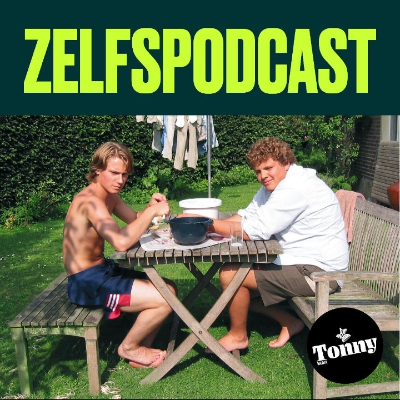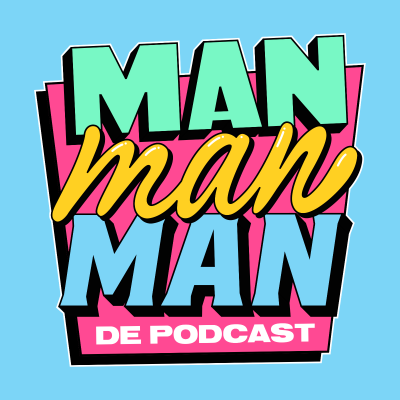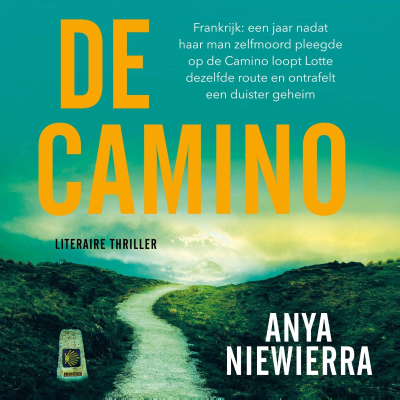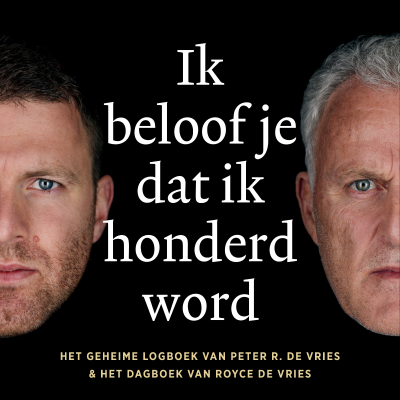
Luister naar Science Friday
Podcast door Science Friday and WNYC Studios
Covering the outer reaches of space to the tiniest microbes in our bodies, Science Friday is the source for entertaining and educational stories about science, technology, and other cool stuff.
Probeer 7 dagen gratis
€ 9,99 / maand na proefperiode.Elk moment opzegbaar.
Alle afleveringen
905 afleveringenAn evolving technology is changing the lives of people with paralysis: brain-computer interfaces (BCI). These are devices that are implanted in the brain and record neural activity, then translate those signals into commands for a computer. This allows people to type, play computer games, and talk with others just by thinking, allowing more freedom to communicate. For decades, this technology has looked like a person controlling a cursor on a screen. But this work has advanced, and in a recent breakthrough, a person with paralysis in all four limbs was able to move a virtual quadcopter [https://www.sciencefriday.com/segments/brain-computer-interface-paralysis/?utm_source=wnyc&utm_medium=podcast&utm_campaign=scifri] with extreme precision by thinking about moving it with their fingers. Another area of BCI research involves speech. Recent work has shown promise in allowing people with vocal paralysis to “speak” through a computer [https://www.sciencefriday.com/segments/brain-computer-interface-paralysis/?utm_source=wnyc&utm_medium=podcast&utm_campaign=scifri], using old recordings to recreate the person’s voice from before their paralysis. Joining Host Flora Lichtman to discuss the state of this technology, and where it may be headed, are Dr. Matthew Willsey, assistant professor of neurosurgery and biomedical engineering at the University of Michigan, and Dr. Sergey Stavisky, assistant professor of neurosurgery and co-director of the Neuroprosthetics Lab at the University of California, Davis. Transcript for this segment will be available after the show airs on sciencefriday.com. [https://www.sciencefriday.com/episodes/april-18-2025/?utm_source=wnyc&utm_medium=podcast&utm_campaign=scifri] Subscribe to this podcast. [https://pod.link/73329284] Plus, to stay updated on all things science, sign up for Science Friday's newsletters [https://www.sciencefriday.com/newsletters/?utm_source=wnyc&utm_medium=podcast&utm_campaign=scifri].
In Connecting Dots: A Blind Life, inventor Josh Miele recounts his life story and path to becoming an accessibility designer. When inventor and scientist Josh Miele was 4 years old, a neighbor poured sulfuric acid on his head, burning and permanently blinding him. In his new book Connecting Dots: A Blind Life [https://www.sciencefriday.com/segments/josh-miele-connecting-dots-blind-inventor/?utm_source=wnyc&utm_medium=podcast&utm_campaign=scifri], Miele chronicles what happened afterwards, growing up as a blind kid, and how he built his career as an inventor and designer of adaptive technology. Host Flora Lichtman talks with Dr. Joshua Miele, an Amazon Design Scholar and MacArthur Fellow, or “Genius Grant” recipient. They talk about the inspiration for the book, how he grew into his career, and how disabled people need to be included in the technology revolution. Transcript for this segment will be available after the show airs on sciencefriday.com. [https://www.sciencefriday.com/episodes/april-18-2025/?utm_source=wnyc&utm_medium=podcast&utm_campaign=scifri] Subscribe to this podcast. [https://pod.link/73329284] Plus, to stay updated on all things science, sign up for Science Friday's newsletters [https://www.sciencefriday.com/newsletters/?utm_source=wnyc&utm_medium=podcast&utm_campaign=scifri].
Are traffic engineering decisions based on evidence-based research? Not as much as you might think. If you’ve seen a car crash on the side of the road, you might look at it and think that the person at fault is the driver. But how much blame should be shared by the people who designed those roads in the first place? Well, some traffic engineers are calling for the field to accept more blame for the crashes and the tens of thousands of annual fatalities that happen on our roads, including Dr. Wes Marshall, a professor of civil engineering at the University of Colorado Denver. In his book Killed By A Traffic Engineer: Shattering the Delusion that Science Underlies our Transportation System [https://www.sciencefriday.com/segments/killed-by-a-traffic-engineer-book-road-design/?utm_source=wnyc&utm_medium=podcast&utm_campaign=scifri], he digs into the standards that have dictated traffic design for decades to find out exactly how much science they’re based on. Spoiler alert: It’s a lot less than you’d think. Host Flora Lichtman sits down with Dr. Marshall to talk about how we got to this point and what a safer version of our streets could look like. Transcript for this segment will be available after the show airs on sciencefriday.com. [https://www.sciencefriday.com/episodes/april-18-2025/?utm_source=wnyc&utm_medium=podcast&utm_campaign=scifri] Subscribe to this podcast. [https://pod.link/73329284] Plus, to stay updated on all things science, sign up for Science Friday's newsletters [https://www.sciencefriday.com/newsletters/?utm_source=wnyc&utm_medium=podcast&utm_campaign=scifri].
The Webb Space Telescope picked up traces of dimethyl sulfide on planet K2-18b. On Earth, the molecule comes from microbes and phytoplankton. Also, researchers captured the first confirmed video of a colossal squid swimming in its natural habitat—almost 2,000 feet deep. POSSIBLE SIGNATURE OF LIFE DETECTED ON EXOPLANET—MAYBE [https://www.sciencefriday.com/segments/life-on-exoplanet/?utm_source=wnyc&utm_medium=podcast&utm_campaign=scifri] In major galactic news, scientists may have detected possible signs of life [https://www.sciencefriday.com/segments/life-on-exoplanet/?utm_source=wnyc&utm_medium=podcast&utm_campaign=scifri] on a planet right here in our galaxy. Is this one of the best hints we’ve gotten that alien life exists? Host Flora Lichtman gets into it with Anil Oza, the Sharon Begley Science Reporting Fellow at STAT and MIT. They discuss the latest in alien life, the Trump’s administration cuts to the “indirect costs” of science funding, the largest map of a brain yet, and how salmon on anti-anxiety meds make bolder choices. A COLOSSAL SQUID VIDEO? THAT’S A BIG DEAL [https://www.sciencefriday.com/segments/colossal-squid-video/?utm_source=wnyc&utm_medium=podcast&utm_campaign=scifri] This week, scientists announced that they had captured the first confirmed video of a colossal squid in its natural habitat, recorded some 1,968 feet (600 m) below the ocean surface near the South Sandwich Islands. While there have been sightings of the colossal squid before, they have mainly been of individuals entangled with fishing equipment—and much of what is known about the elusive creatures comes from dead specimens. The video [https://www.sciencefriday.com/segments/colossal-squid-video/?utm_source=wnyc&utm_medium=podcast&utm_campaign=scifri] was captured by scientists on board the R/V Falkor (too) during an Ocean Census expedition searching for new marine life. As the remotely operated vehicle SuBastian descended towards the ocean floor, its cameras caught sight of a juvenile squid roughly one foot long (30 cm), and captured over a minute of high resolution video. The footage was later analyzed by experts and determined to be a colossal squid. Colossal squid are estimated to grow up to 23 feet (7 m) in length and can weigh as much as 1,100 pounds (500 kg), making them the heaviest invertebrate on the planet. They are not the same as the giant squid, an entirely different species, which can grow to be longer but are lighter and slimmer. Dr. Kat Bolstad, one of the squid experts the researchers sent their videos to for identification, joins Host Flora Lichtman to talk about the sighting. Transcripts for each segment will be available after the show airs on sciencefriday.com. [https://www.sciencefriday.com/episodes/april-18-2025/?utm_source=wnyc&utm_medium=podcast&utm_campaign=scifri] Subscribe to this podcast. [https://pod.link/73329284] Plus, to stay updated on all things science, sign up for Science Friday's newsletters [https://www.sciencefriday.com/newsletters/?utm_source=wnyc&utm_medium=podcast&utm_campaign=scifri].
Imagine you’re diving into a cell [https://www.sciencefriday.com/segments/science-interpreters-visualization/?utm_source=wnyc&utm_medium=podcast&utm_campaign=scifri?]. You’re paddling around in the cytoplasm, you’re climbing up a mitochondria. If you’re having a hard time picturing this, that’s okay! There are professionals who do this for a living. We wanted to learn more from expert science interpreters [https://www.sciencefriday.com/segments/science-interpreters-visualization/?utm_source=wnyc&utm_medium=podcast&utm_campaign=scifri?], who take the results section of a research paper and translate it into something tangible, like a 40-foot dinosaur skeleton or a 3D animation of cellular machinery too small to see [https://www.sciencefriday.com/segments/science-interpreters-visualization/?utm_source=wnyc&utm_medium=podcast&utm_campaign=scifri?]. At a live event in Salt Lake City in March, Host Flora Lichtman spoke with Dr. Janet Iwasa, head of the University of Utah’s Animation Lab and director of the Genetic Science Learning Center; and Tim Lee, director of exhibits at the Natural History Museum of Utah, about how they bring these out-of-reach worlds to life. Transcripts for each segment will be available after the show airs on sciencefriday.com [https://www.sciencefriday.com/episodes/april-11-2025/?utm_source=wnyc&utm_medium=podcast&utm_campaign=scifri]. Subscribe to this podcast. [https://pod.link/73329284] Plus, to stay updated on all things science, sign up for Science Friday's newsletters [https://www.sciencefriday.com/newsletters/?utm_source=wnyc&utm_medium=podcast&utm_campaign=scifri].
Probeer 7 dagen gratis
€ 9,99 / maand na proefperiode.Elk moment opzegbaar.
Exclusieve podcasts
Advertentievrij
Gratis podcasts
Luisterboeken
20 uur / maand



















